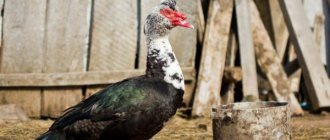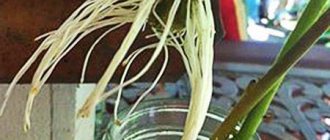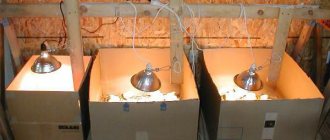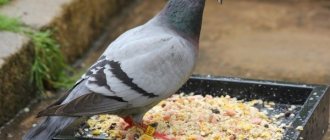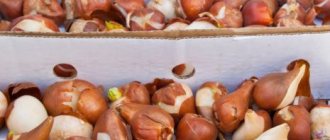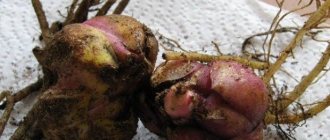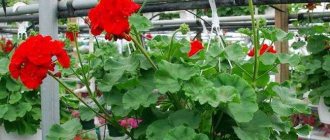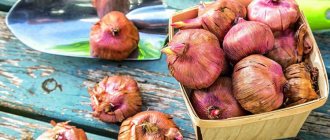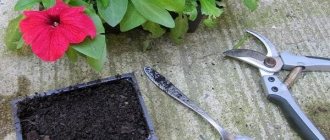Content Features
There is an opinion that due to its good down cover, this type of bird is not afraid of frost. This is only partially true. Indeed, geese can tolerate frosts down to -10 ° C well. With good care, they don't mind -30 oC. But there is a very important nuance - they do not tolerate dampness.
If the humidity is very high, the feathers instantly become dirty and stick together. In this case, the down layer does not perform its functions. The bedding in barns quickly gets wet and dirty, and as a result, the birds’ feet get cold. This is a very dangerous condition for geese and they begin to get sick and even die.
Additional Important Information
It is useful to give sprouted oats to breeding birds before the laying season. The grain is soaked in warm water for 5–7 hours, then kept in a wet cloth. Sprouts appear on the second day of germination. Each individual is given 1–2 tbsp. spoons of sprouts per day.
It is necessary to monitor the dryness and cleanliness of the bedding in the gooseneck. Legs are the weak point of geese; birds often get sick on damp bedding. During the breeding season, the gander can be so engrossed in caring for the females that he forgets to eat and loses a lot of weight. It is necessary to feed it separately, by hand.
Although geese peck at snow instead of water, experienced poultry farmers advise not to give up drinking bowls in winter. Lack of fluid in the body leads to central nervous system disorders in birds and reduces egg production.
Keeping and feeding geese in the cold season does not cause many problems. Birds do not need to insulate the house, but it is important to provide protection from drafts. Silage and vitamin supplements are added to the usual diet. With proper feeding, geese continue to gain weight in winter.
Keeping geese at home in winter
Before the arrival of cold weather, you need to prepare a room for wintering birds. It doesn't have to be a perfect shed. It can be built from old boards. If cracks form in it, they can always be sealed with straw or modern sealants.
In this way, the geese will be protected from wind and dampness, which is worse for them than frost. The floor in the barn should be made of planks. Ground flooring or cement is not suitable - the bird's feet will freeze.
A bedding made from available raw materials is placed on the floor. It could be:
- straw;
- sawdust;
- peat.
The height of the flooring should be at least half a meter. In this case, the bird will not only not freeze, but will also feel comfortable. Keeping geese at home in winter requires frequent cleaning of the top layer of flooring. Thus, moisture will not spread throughout the room.
In place of the removed layer of dirty raw materials, the same new one is placed. Experienced poultry farmers have come up with a little trick to prevent the smell of ammonia in the barn. To do this, once every 7-10 days you need to sprinkle the top layer of the flooring with superphosphate. 400 g of substance is consumed per 1 m2.
Keeping geese at home in winter (photo in the article) does not require their constant stay in the barn. The bird needs to be let out for a walk. Even in severe frosts, geese can stay in the open air for about 1-2 hours. The main thing is to remove snow from the walking area so that their feet don’t freeze.
Caring for geese in winter
Due to worsening weather conditions, winter care is more thorough than summer care. Its rules are simple, but compliance is mandatory:
- Keep the plumage clean. Dry and clean feathers will protect birds from hypothermia and illness. Therefore, regularly change the bedding to dry material.
- The minimum suitable temperature in the poultry house in winter is +3…+5 °C. Below this level, geese will have to eat more and stop laying eggs to maintain energy.
- The bird needs long daylight hours, about 14 hours, for the entire breeding period. And if in summer this is the natural duration, then in winter equip the coop with lighting devices at the rate of 5 W per 1 sq. m. Turn on the light at about 5 am, turn off after sunrise. Evening shutdown – from the beginning of sunset until 19:00.
- Provide the males with food. They take care of the geese and often go hungry because they wait for the females to eat. Ganders need to increase their feeding rate by 20%.
Please note that each gander in good condition, strong, healthy and well-fed, will efficiently fertilize 3-4 geese, ensuring their high egg production.
What to build a wintering room from
A warm and cozy room is the key to success and hassle-free keeping of geese in the winter at home. For beginners, below are several ways to arrange a home for birds.
Geese can easily winter in a wooden room. This can be a ready-made shed or a specially built one from boards. Also, recently, breeders have been practicing keeping geese in polycarbonate greenhouses in winter.
Such a room allows light to pass through, and under the snow it becomes even warmer. There are absolutely no drafts in the greenhouses, which is very important for the proper wintering of birds. Some farmers send geese to winter in film greenhouses. This option is also possible provided that this area is properly arranged.
Features of the winter room
Geese are one of the representatives of the feathered family that their dense plumage allows the birds to withstand winter temperatures well. The main requirement for a room is its reliability against drafts. The poultry house can be built from wood, bricks or clay. In the case of using boards, improvised means are used to eliminate cracks: cotton wool, fabric, tow. Dampness and drafts are the main enemies of geese in winter.
Winter room for geese
If the feather cover is dirty and damp, then there is a very high probability of various diseases that can lead to death. The limbs are considered the weakest point of birds. To protect them, you will need to put a flooring on the floor and use a thick bedding, which is removed when it gets dirty. Some owners use superphosphate to treat bedding materials. Despite the fact that the product is a fertilizer, it reduces the negative effects of ammonia on the body of birds.
Wintering in greenhouses
This option is now quite popular among poultry owners. Keeping geese in a greenhouse in winter gives good results. Individuals continue to develop, lay eggs and increase body weight.
To properly arrange a place for wintering, you need to follow a number of rules:
- the greenhouse must be heated occasionally in severe frosts;
- strengthen the greenhouse for stability during snow and wind;
- make lighting.
These points of the plan will ensure high-quality maintenance of geese in winter. Before moving in, birds must be thoroughly cleaned there. In dust and debris, individuals will begin to get sick. Ventilation must also be provided.
It will be warmer in a polycarbonate greenhouse. This material tends to heat up quickly. It is also necessary to make a high floor on the floor. The top layer must be removed in time.
How can you replace greens?
Keeping geese in winter frightens novice poultry farmers because they do not know what can replace the green, juicy grass that geese love so much. You can dry nettles in the summer. When dried, its beneficial properties remain the same as when fresh. Vegetables should be the main food in the autumn.
It is important to remember that you should never give sprouted potatoes to birds, because they contain a toxic substance. Also, you should not give water in which potatoes were boiled: this can cause a number of serious gastrointestinal disorders and lead to death. With the arrival of autumn, so that wintering does not affect the health of the geese, it is necessary to switch them to high-carbohydrate food. You can enter hay into the menu. Moreover, it is desirable that it be dried not in the sun, but in a well-ventilated, shaded place.
Hay should be given dry or steamed. The most useful is considered to be hay dried from various cereal crops. In winter it is necessary to increase the number of feedings. The most important thing is that the food is as balanced as possible and rich in vitamins and minerals.
Keeping geese in a greenhouse in winter: reviews
Farmers and owners of private estates are pleased with the opportunity to create wintering areas for birds in greenhouses. Many people believe that this way they can save on fertilizer. Geese love to bury their excrement in the ground. This way the fertilizer will be ready by spring.
Due to the downtime of greenhouses in winter, keeping them busy with poultry is a great idea. Most often, heating and lighting are already installed here. Thus, all that remains is to arrange the nests and decorate the flooring.
The owners note that caring for geese in greenhouses is much more convenient. During cleaning and feeding, people do not freeze and feel comfortable. Also, during the daytime you can do without additional lighting, because the walls transmit light well.
Where can you keep geese in the cold season?
Geese often keep warm by tucking their legs and beaks into their rich, downy plumage. This is what they do if they are cold. Therefore, these birds will definitely need shelter from rain, wind and snow. Dampness is especially dangerous for them, which means that the humidity in places where they are kept should not exceed 65%.
The following can be used as winter living space:
- sheds;
- chicken coops;
- greenhouses.
Did you know? In ancient Rome, geese were used as guard animals. They always shouted to announce the appearance of strangers or animals.
In the barn
Typically, a barn is a room for household purposes, adapted for storing equipment, keeping animals or storing feed. The barn can be brick, wood, or adobe. To make the birds comfortable, it is necessary to equip it with nests, feeders, drinking bowls and ensure good air exchange, absence of drafts and lighting.
Air exchange will be carried out using the supply and exhaust pipes. The cracks are caulked and the future poultry house is insulated. Natural lighting is provided by the window; in addition, electric light is also installed. Birds do not need additional heating, as they generate enough heat to avoid freezing in an insulated room.
- Advantages of barn maintenance:
- Geese have a separate home;
- if the barn is insulated, then the cost of preparing it for winter is minimal;
- if the barn will be used as a goose barn in the summer, then this would be a good choice of premises.
- The disadvantages of keeping a barn are:
- if equipment is stored in it, this is not very convenient for both the birds and the owners;
- during maintenance, the room will become contaminated with excrement - the equipment and the barn itself will have to be thoroughly washed;
- cleaning and disinfection will be difficult and illness may result.
In the chicken coop
If the chicken coop is inhabited by chickens, then the room can be divided into 2 sections and part of the chicken coop can be set up for geese. This method also has its advantages and disadvantages.
- Advantages of keeping a chicken coop:
- minimal investment of money and time - it is enough to equip nests, install drinking bowls and feeders;
- lighting, insulation and ventilation are completely ready.
- Flaws:
- geese are large birds, so conflicts between representatives of different species may arise in the chicken coop;
- disease prevention and disinfection become more complicated, since birds react differently to the same pathogens;
- Most chickens lay eggs in a calm environment, and the presence of other birds can be a factor that will contribute to a drop in egg production.
Did you know? Geese love water, but can live without it. A wide bowl for a goose to dip its head in and drink from. In summer, farmers use small containers to create pools for geese. And water from the pool is suitable for fertilizing the garden, since a certain amount of manure accumulates in it.
In the greenhouse
A modern heated greenhouse can also become a winter home for geese. The basic idea is that in nature, birds and plants coexist and do not harm each other. The greenhouse is very light and usually has ventilation.
On a sunny day, the air in the greenhouse heats up quickly, so it is often used to organize a poultry house.
- Advantages:
- sufficient warmth, light and space;
- goose excrement will fertilize the soil;
- chemical reactions in soil fertilized with manure eradicate rot and pests;
- birds will provide high-quality soil aeration.
- Flaws:
- to prevent eggs from freezing, nests are installed at a low height, for example, on bales of hay;
- plants that are not protected from geese may suffer as birds search for insects;
- on sunny days birds can overheat;
- Ammonia in large quantities contained in droppings can destroy plants.
Did you know? The first farmer to use greenhouse poultry
is Riley Stark, whose farm is located on one of the many islands off the northwest corner of Washington State.
Need for a walk
In the cold season, even in frosts, you need to let the geese out for walks. They must last at least an hour. This way the birds develop their paws and make it possible to digest the food well.
If geese lead a sedentary lifestyle, then all their reserves are stored in fat, and not in muscles. Also, fat birds stop laying eggs, and then it is almost impossible to establish this process.
In winter, geese can be allowed to swim in shallow ponds. This way they will develop their muscles, and the meat will become very tasty. At this time, the owner can calmly clean the room and ventilate it.
Organization of walking
The area where the geese roam must be prepared. You need to do the following:
- Remove snow from the area so that down and feathers do not get wet.
- Cover the surface with straw - this will protect the paws from freezing.
Each walk should last at least an hour. You can let the geese out to swim in the nearest body of water. To do this, during the thaw, prepare an ice hole in advance. During frosts, swimming is not recommended, as too cold water will lead to hypothermia of the paws.
How to set up a goose barn
Building a barn or putting birds in a greenhouse is not enough care. The goose barn must be arranged according to the rules. The equipment consists of:
- drinking bowl;
- feeders;
- nest
These three elements must be present in the goose barn. Nests can have standard sizes. Height and width - 50 cm, and length - 60 cm. They can be made from boards, boxes or plywood.
There should be partitions between the nests, and a 10 cm step should be formed in front. The bottom should be built of wood. Geese bury eggs in the flooring. If you make the floor concrete or iron, the eggs will freeze. Such nests should be in place already on the 15th-20th of January.
If possible, it is better to make perches in a separate room. This can be realized using a partition. Thus, other individuals will not be able to prevent the geese from laying eggs. Birds often fight among themselves and drive others from their nests.
It is better to collect eggs early. Birds lay eggs at night or early in the morning. By lunchtime they may already be frozen. The room needs to be cleaned frequently. Severe gas pollution affects the number of eggs obtained from one individual.
If a hen sits on a nest to produce offspring, she needs additional care. She may not even get up from her perch to eat. Thus, you need to not aggressively drive it away and add fresh food and water.
Otherwise, when the bird leaves the nest for a long time, it is necessary to take care of heating the eggs. It is better to feed the hen with rough and solid food so that she does not stain the eggs.
Types of goose feed
A properly formulated feeding diet for poultry is the key to healthy offspring and high productivity of the entire livestock. Weight gain, fertility, egg production and other factors of successful poultry farming depend on how balanced and energetically valuable the feed is.
For example, by the beginning of the breeding period, geese should gain weight and be plump.
There are several types of feed, below we will look at their advantages, disadvantages and features. Neither type is used in its pure form. They are combined, alternate, and each owner himself adjusts the diet depending on the breed of geese, the time of year, the conditions of detention and the task he is pursuing.
Wet
The wet type of food, or the so-called “mash”, is especially popular among small farms and private breeders, since it allows for small savings - it can be prepared partly from leftovers from your own table.
This includes:
- root vegetables (potatoes, carrots, beets);
- fresh white cabbage;
- pumpkin;
- turnips, rutabaga;
- freshly cut grass;
- fish tripe (in small quantities);
- slaughterhouse waste;
- boiled blood;
- milk serum.
It is very important to monitor the consistency of wet food. The ingredients should not stick together into a lump, this can negatively affect the bird’s digestion. It’s easy to check the density: gather up a handful of food, squeeze your palm, and then quickly release it to the ground. If the pile turns out to be crumbly, then everything is in order and the food is suitable for consumption.
Important! Wheat, which was collected the day before, can be no more than 20% of the mash, otherwise the feed risks turning into gluten.
Do not leave wet food in feeders for long periods of time, especially in hot weather. It may turn sour or moldy. After the geese have eaten, it is best to clean the containers immediately.
Feeding mash means three meals a day. In this case, the first meal is in the morning, no later than 7 a.m., and the second is after lunch, so that the wet food has time to digest a little in advance.
Dry
Dry or roughage feed is also very beneficial for the bird’s body, especially in winter. They contain various grains - both crushed and whole.
Dry food ingredients:
- wheat;
- chopped corn;
- barley grain;
- rye waste;
- chopped oats;
- millet.
The amount of harmful impurities should not be high.
The approximate norm is:
- kukol - 0.25%;
- tares - 0.1%;
- ergot - 0.05%.
Important! Rough food will be easier to digest if you mix a little wet food into it.
Geese eat dry food better if it is flavored with a concentrate with the addition of beets, potatoes or pumpkin. Beets can be used as fodder beets or as sugar beets. The birds are also given clover flour; the daily norm can reach 300 g per day.
Combined
Special feed can be purchased at a farm store; it varies in age and composition. To ensure that the birds do not choose only large parts of the feed and eat fully, responsible manufacturers began to produce their products in granules.
The feed contains artificial growth stimulants, preservatives and hormones.
Combined feed is necessary for goslings in the early stages of feeding, and it can also be an excellent help in winter if difficulties arise with the preparation of dry food.
Formation of feeders
Keeping geese at home (photos of wintering options in the article) is accompanied by the arrangement of good feeders. The best option is two boards, knocked down at an angle. At the top of the sides you need to make additional strips that will not allow the bird to climb inside.
Shields should be nailed lengthwise to prevent the geese from scattering food. The feeder should be large, or several of them should be made so that the birds feed at the same time and do not require supplements, otherwise it will be difficult to monitor the correct diet. This threatens excessive fat gain.
The upper limit of the feeder should not be lower than the bird's back. Periodically, the feeders are washed and dried to avoid rotting. Separate small troughs can be built for hens.
Features of feeders
When choosing feeders, it is worth considering how practical they will be (this is necessary to ensure that feed consumption is kept to a minimum). The easiest way is to use a small trough. To make it you will need planed boards with a thickness of up to 25 mm. On top of the structure you need to fill several partitions that will not allow birds to climb into the feeder.
Goose feeder option
An additional advantage of the slats is that they act as a handle, using which you can easily move the feeder from one part of the room to another. Some poultry farmers stuff small shields on the sides of the container. They serve to prevent the bird from throwing away food. The height of the feeders is made so that they are at the level of the dorsal region of the birds; the length is modeled depending on the number of livestock. All birds should be able to easily fit near the feeder.
Drinking regime
If there is not enough water or the old one is not replaced in a timely manner, the bird may get sick. Also, the geese will stop laying eggs. This process depends largely on the conditions under which the individuals are kept.
To prevent the litter from getting wet, place the container with water on a wooden grid or metal sheet. This way excessive humidity in the room is avoided. Large buckets or any troughs can be used as containers.
You can run a hose from a barrel of water to the drinking bowl. This will provide fresh water. The pressure should be kept to a minimum. If a bird does not drink for more than 2 days, it completely stops laying eggs.
You can water the geese with melted snow water. It contains many minerals. Some owners place buckets of snow indoors.
Additional food
In addition to the herbs that grow in meadows, you can collect willow, birch, and oak branches and dry them. You can use them as a component of silage. They take a dry preparation, then water it with water and hang it on the walls of the poultry house. If oak trees grow in the area where the bird owner lives, you can prepare acorns based on the norm: 6 kg per individual. Such raw materials must be dried and added to the mash, peeled and cooked for an hour.
If there is little grain, you can give potatoes instead. It should be fed to birds in boiled form. Raw is also suitable, but for this you will have to accustom the goslings to grated potatoes from an early age. If you are preparing mash with its addition, you should prepare only the amount that will be eaten at a time. This is explained by the fact that the vegetable sours quickly.
You can replace grain with potatoes in a ratio of 3 to 1. That is, 100 g of whole grain can be equated to 300 g of mash with the addition of potatoes and a small amount of herbs.
It must be taken into account that geese also eat at night. For this reason, it is necessary to leave oats in the feeder. Fattening males deserves special attention. The breeding period is accompanied by a large number of matings, which leads to their fatigue. For this reason, the percentage of fertilized eggs decreases . Accordingly, to increase this indicator, prepare a mash that contains:
- 20 g grated carrots;
- 80 g oats or any other whole grain, such as wheat;
- 4 g yeast.
Feeding should be given to males when females are out for a walk. Water can be offered both tap water and melt water. Separately, you should offer them a mixture of chalk and crushed egg shells. It is a source of minerals.
What to feed geese during cold weather
The number of feedings per day depends on the month of the season and the bird’s lifestyle. Keeping geese in winter requires a specific feeding schedule. Until January, it is better to give the bird food twice a day. The first feeding should be mash, followed by coarse grain in the evening.
To make mash, you need to mix food scraps and a small amount of porridge. It is best to use oat grains. This is the favorite porridge of geese. Fishmeal and grated carrots are added to this mixture.
In January, the number of feedings increases to three times. At this time, the bird expends a lot of energy - it is preparing for egg laying. During this period, grain is given in the morning and evening, and mash is given at lunchtime. In preparation for the breeding season, the amount of feed should be increased and the bird should not be afraid of obesity. In February, it is worth adding beets and carrots in large quantities to the geese’s diet to awaken their appetite.
At this time, the ganders are actively feeding. They lose a lot of energy during the mating process. To do this, feeders are hung on the walls at a height of 90 cm. In this case, the geese will not get the food. Or, before additional feeding, all the birds, except the ganders, are taken out for a walk.
If the farm does not have enough grain, you can partially replace it with potatoes. This vegetable is not so high in calories, and you will need 3 times more of it. The diet must include roughage. Hay can be given dry or steamed with the addition of oatmeal and vegetables.
Diet of geese in winter
Unlike in summer, in winter it is impossible to provide geese with ordinary grass and insects, which are an important component of a healthy diet. The winter diet is very different; it must be prepared according to certain rules.
Nutrition
In November and throughout December, meals should be two meals a day. The morning feeding is a mash, and the evening feeding consists only of whole grains. January should be spent on three meals a day, then until March inclusive (this is the time of laying eggs) on four meals a day according to the following scheme:
- day - wet mash;
- morning and evening - whole grain.
For food in winter, forage grasses are required. They are given 0.3 kg per individual daily. Nettle and alfalfa are recommended; meadow herbs in the form of hay are also suitable. Such roughage can be added dry, but in steamed form it is better absorbed:
- Chop coarse hay and pour boiling water over it.
- After 5-10 minutes, mix with chopped vegetables - beets, carrots, rutabaga or potatoes.
- Oat chaff is good to use instead of hay.
Geese love oats very much; they are added whole to their food. But wheat and barley cause obesity in birds kept at home, which significantly reduces egg production. An important part of the diet in the winter months are dried herbs and leaves, acorns, and vegetables.
Rules for feeding geese in winter:
- Hay is prepared for geese in quantities of 15 kg per bird. These can be dried or ensiled meadow grasses.
- A useful addition would be brooms made from dry branches of linden, birch, willow, and oak. Dry preparations need to be steamed and hung along the walls of the poultry house.
- Oak acorns are a must. The norm is 6 kg per individual. Dried acorns are peeled from the shell before adding to the mash, and boiled for 1 hour.
- The lack of grain is replenished with raw and boiled potatoes. In order for the goose to get used to such food, grated potatoes are introduced into the chicks’ diet from childhood.
- The mash with the addition of potatoes and other vegetables is prepared at one time, otherwise it may turn sour after a few hours. This will lead to gastrointestinal upset in birds.
- When replacing grain with potatoes, the proportion is 3:1. For example, 3 kg of potato mash with herbs fully replaces 1 kg of whole grains.
When geese begin the mating period, it is recommended to leave oats in the feeder overnight. This is especially important for males: due to frequent sexual intercourse, they lose weight, and this affects the quality of fertilization.
It is better to feed the geese indoors while the geese are walking outside. The following products are used for feeding:
- whole wheat, barley, oats – 80 g;
- grated carrots – 20 g;
- baker's yeast – 4 g.
The quantity is given per individual.
Vitamin supplements
Even good food in the required quantities will not provide domestic geese with the necessary microelements. The reason for this is the lack of sunlight, cold, lack of fresh grass and insects, and low mobility. Therefore, it is necessary to introduce vitamin supplements into the diet.
Nutritional supplements are easy to make yourself. For example, to provide the body with vitamins A and D, fish oil and wheat germ are added to the feed. Sprouted wheat is prepared as follows:
- Fill the barley with water at room temperature and leave it indoors for 2 days.
- Scatter the swollen grains on a flat surface so that they almost do not touch and the layer is uniform.
- On the 3rd day, sprouts will appear. In a couple more days they will get stronger, each grain will “hatch”, and you can add the resulting product to the wet mash.
In winter, birds will also need calcium and mineral supplements. Suitable for this:
- shell rock;
- shells of nuts, eggs;
- chalk.
These substances can be given together or separately. The main thing is to grind them well to make it easier for the geese to eat. It is recommended to add fine gravel: it helps the birds' stomachs digest food.
Drink
It is a mistake to assume that snow will replace water for poultry in winter. In fact, the drinking regime for geese in the cold season is more important and more difficult than in the summer.
A lack of fresh water will cause circulatory problems in birds, which will lead to a breakdown of the nervous system. This state will turn into constant aggressiveness or, conversely, lethargy. In any case, the geese's egg production will decrease.
The amount of water required is 2 liters per day for each bird. The drinking bowl container must be uncontaminated, so liquid stagnation should not be allowed. The water must be changed every day.
Try to make a drinking bowl with running water. But if this is not possible, use wide, low buckets, wooden or galvanized troughs that can be easily emptied and rinsed.
Keeping birds in winter in Siberia
Some owners experiment and keep the bird outside in cold weather. Scientists have proven that geese can withstand temperatures below -60 °C. To successfully winter in the open air, you need to make a very high flooring of straw on the site so that the geese can burrow into it.
Keeping geese outside in winter requires an increased diet in both quantity and calorie content. This way the geese will gain fat mass and be able to safely endure severe frosts. It is also necessary to arrange nests and feeding areas outside.
Some owners on the street simply put up three partitions without a roof so that the bird can hide from the wind. To prevent the paws from freezing, they can be lubricated with fat. It has been proven that large breed geese tolerate severe frosts better.
Keeping geese in winter in Siberia requires additional costs for food and care. So it is more advisable to put together at least a small shed from boards without additional heating.
Preparing feed for the winter
Green food can and should be prepared in the summer.
Hay
Dried herbs are an essential component of high-calorie food for poultry in winter. Geese require supplies of nettles, clover, aveluk, and alfalfa. All this must be prepared before the flowering period.
After mowing, the grass is dried in the shade or in stacks. This drying method saves nutrients. When drying hay in the sun, fewer useful components remain. As soon as the hay in the stack shows signs of dryness, it is immediately sent for storage in a barn or stable. Dry grass is chopped into small pieces and added to food as part of mash.
Silage
Silage for geese is prepared on the basis of beet and carrot tops, leaves from corn cobs. You can make silage from nettles and legumes with the obligatory addition of meadow grass.
Procurement rules:
- Grain silage is harvested immediately after heading begins.
- Legume silage is harvested just before the flowering stage.
- Corn leaf silage is made when the crop is still green.
Raw materials are processed immediately after collection in silos or barrels. To prevent spoilage of the silage, table salt is added to it. After filling the container with silage, it is necessary to block the access to oxygen and ensure that the contents do not freeze.
To preserve silage, you must wait 2 months from the date it was laid. A normal product should have a slightly sour smell. The appearance of the smell of hydrogen sulfide indicates the beginning of the process of decay of the preserved food.
Experts recommend preparing combined types of silos. For this, 3 compositions of ingredients are offered:
- Boiled jacket potatoes, carrots with tops and cabbage in equal proportions.
- Boiled potatoes with clover, amaranth and oatmeal.
- Finely chopped carrots, beets, legumes and meadow grass.
The silage feeding rate is 200 g per day per adult goose.
Green flour
Prepared from dandelions and nettles. Raw materials are harvested in May-June. The collected plants are first dried in the fresh air, then dried in an oven at a temperature of about 180°C, preventing the raw materials from burning.
As soon as the herb begins to break easily, it is removed from the oven, crushed to a powdery state and stored in a cool, dry place. In winter, when feeding, add it to wet mash.
Needles and pine trees
Spruce and pine needles are a source of vitamins C and E, so they are harvested as a vitamin supplement. The collected needles are finely chopped and stored in a cool, dry place. During feeding, the product is added to the mash.
Harvested needles are also an antiparasitic agent. However, with the onset of spring, the remains of pine needles are thrown away, because they form compounds that are toxic to geese.
Seeds
Procurement of seeds from clover, aveluk and amaranth herbs is carried out at the rate of 40 g of product per goose per day. The seeds of these herbs are nutritious and beneficial for adult birds, but are not suitable for young geese due to insufficient development of the digestive system.
Brooms from deciduous trees
The branches of poplar, birch, acacia and alder are harvested in the autumn. Cut branches are tied into bundles and dried in a warm and dry place. In winter, they are soaked in water and hung in places accessible to geese.
The brooms of deciduous trees contain a high amount of vitamins and minerals, which helps keep geese healthy throughout the winter. Instead of brooms, you can harvest the foliage of the above trees. To do this, the leaves are thoroughly dried, chopped into flour and added to the mash.
Vitamin paste
To prepare it, pre-dried plants are taken, ground and soaked in water. To one part dry herb there should be 3 parts liquid. As soon as the greens are soaked, the moisture is drained, the plants are squeezed out and boiled. During the boiling process, a curd-like mass should appear on the surface. It is collected and squeezed through thick fabric. If preservation is necessary, the vitamin paste is salted and stored. Used as a top dressing in fresh and salted form.
Nuances of indoor lighting
If you use light bulbs before January-February, you can speed up the process of egg laying and incubation of new offspring. Lighting creates additional heating, and the bird gets lost in its correct development cycle. During this period, it is better to turn on the light, observing the daylight hours. You can even reduce the lighting time of barns by 2-3 hours.
From mid-January, light bulbs can be used as a catalyst to speed up laying and a good hatching process. At this time, the light is left on for 12 or more hours.
Practical recommendations
- Healthy and strong birds should be left for the winter.
- In order to prevent the formation of excess moisture during the cold period, it is necessary to frequently update the top dirty layer of litter.
- Feeders and drinking bowls should be cleaned daily of food and water residues to prevent freezing.
- To eliminate the smell of ammonia in the goose barn, the top layer of the flooring can be sprinkled weekly with superphosphate at the rate of 400 grams per square meter.
- Geese kept indoors should be allowed out for a walk at least 1–2 hours a day, even in frosty weather. Birds need to develop their paws and digest food properly so that it is not stored as excess fat. Snow must be removed from the walking area.
- Geese are waterfowl, so it is advisable to provide them with the opportunity to frolic in some shallow body of water in winter.
- During the period of hatching, it is better to feed geese with solid food so that they do not stain the eggs.
- Birds lay eggs at night and in the morning, so it is better to collect eggs in the morning, as by lunchtime they may already be frozen.
- For a hen hatching her offspring, special care should be provided and additional attention should be given to her. If she periodically does not get up from the nest, she should be driven away and offered food and fresh water. Conversely, if the goose leaves the eggs for a long time, it is necessary to provide them with heating.
Keeping geese at home does not cause any particular difficulties both in summer and in winter. All equipment for caring for geese in winter can be made with your own hands from available materials. The cash costs for food and maintenance will be returned a hundredfold as meat, eggs and offspring are obtained.
Feed consumption per goose. Feed quantity
The amount of feed per bird is calculated by dividing feed intake by the live weight of the bird. In other words, it is the amount of feed eaten (in kilograms) required to produce 1 kg of meat (live weight). For example, geese fed an ad libitum balanced diet after 10 weeks will have a feed conversion ratio of approximately 3:1. This means that a total of 12 kg of feed will be consumed to increase body weight by 4 kg. As goslings get older, the dependence of their growth on increasing the amount of feed decreases.
How to feed geese in winter. Basic diet
The goose is a large bird, and it consumes a lot of food. In winter, geese need to be fed more than in summer. At this time of year, they are deprived of the opportunity to independently search for food in the grass outside.
It is believed that for the winter one goose needs 34-36 kg of vegetables and 12-16 kg of high quality hay. Don't forget also about cereals, beans (peas), mineral supplements (egg shells, sodium bicarbonate).
Important! In the warm season, when geese graze on the grass most of the day, only evening feeding will be sufficient. Thus, the bird develops a conditioned reflex, and it returns home.
Feeding the goslings
The little chicks are fed for the first time shortly after birth. Wait for the goslings to dry, and you can begin.
Approximate diet for the first week:
- boiled eggs, pureed with oatmeal;
- well-cooked millet;
- finely crushed peas, well soaked in water;
- beet and meadow greens.
Feeding table for goslings, grams per head.
Grated root vegetables have a beneficial effect on the digestion of goslings. From the 2nd week, the chicks begin to be fed potatoes.
Young goslings are fed every 2.5-3 hours, up to 7 times a day. Gradually, the frequency of feedings is reduced, and the amount of food is increased. From the 2nd month of life, geese eat the same number of times as adults.
Feeding adult geese
One adult bird needs:
- potatoes, beets or carrots - 1/2 kg;
- meat and bone meal - 0.15 kg;
- any grain - 0.1 kg;
- minerals - 0.05 kg;
- vitamin and mineral complex.
In winter, the grain component of the diet is increased. Geese also love garden waste rich in carbohydrates (spoiled, deformed, slightly rotten fruits).
Geese feeding table, grams per head
The source of protein needed by poultry is waste from fermented milk production.
Some amaranthaceae, aveluk, sweet clover - these herbaceous plants can be used for feeding instead of cereals.
An approximate feeding scheme for adult geese may look like this:
- Meals 1 and 2 should consist of wet mash (boiled potatoes, vegetables, mixed feed, grass flour);
- The third method is sprouted or pre-soaked grains.
Important! During the egg-laying period, feed rich in nutrients should not be suddenly introduced into the bird’s diet. Geese begin to quickly gain weight and their productivity decreases.
Feeding standards for geese in winter. Signs of an improperly designed diet
In order to understand how correctly the diet of geese was composed, it is enough just to observe the behavior of the pets.
Provided that the birds are healthy, the following signs of mistakes will be:
- Large amounts of ingested green food can lead to intestinal upset, especially in young animals. Birds should be limited in this product and partially replaced with dry cereal and yolk. In addition, it is necessary to temporarily reduce the amount of drinking.
- In cases where dry flour food is given to geese in large doses, they develop a cough and have difficulty breathing. In this case, you need to react without delay. First of all, reduce the concentration of such feeds and immediately increase the moisture content of the mixture using ordinary water. You can also add wet sand to the feeders, with the help of which the intestines will cleanse themselves. Sometimes poultry farmers even have to force water into the birds.
- While walking, geese often identify grass by smell, which may be dangerous for them, and therefore do not eat it. Sometimes inexperienced young animals still decide to try nightshade or hemlock. We need to make sure that this doesn't happen. In case of poisoning, birds need to be given plenty of water and an intestinal lavage procedure must be carried out.
- It is not uncommon for birds to suffer from indigestion during the initial stages of water walking. This is due to poisoning, which is provoked by shells, fish and silt. It is with them that various infections easily penetrate into the body of geese. In this case, it will not be possible to do without antibiotics. In the future, the birds will develop immunity, and they will be able to safely obtain food for themselves in bodies of water.


